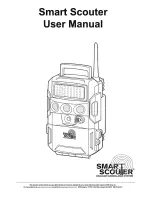
52
Spyder3 S3-14 and S3-24 Monochrome Camera User's Manual
03-032-20117-01
Teledyne DALSA
Flat Field Correction Restrictions
It is im p ortant to d o the FPN correction first. Resu lts of the FPN correction are u sed in the PRN U
p roced u re. We recom m end that you rep eat the correction w hen a tem p eratu re ch ange greater than 10°C
occu rs or if you ch ange the analog gain, integration tim e, or line rate.
PRN U correction requ ires a clean, w hite reference. The qu ality of this reference is im p ortant for p rop er
calibration. White p ap er is often not su fficient becau se the grain in the w hite p ap er w ill d istort the
correction. White p lastic or w hite ceram ic w ill lead to better balancing.
For best resu lts, ensu re that:
50 or 60 H z am bient light flicker is su fficiently low not to affect cam era p erform ance and calibration
resu lts.
For best resu lts, the analog gain shou ld be ad ju sted for the exp ected op erating cond itions and the
ratio of the brightest to d arkest p ixel in a tap shou ld be less than 3 to 1 w here:
The cam era is cap able of op erating u nd er a range of 8 to 1, bu t w ill clip valu es larger than this ratio.
The brightest p ixel shou ld be slightly below the target ou tp u t.
When 6.25% of p ixels from a single row w ithin the region of interest are clip p ed , flat field correction
resu lts m ay be inaccu rate.
Correction resu lts are valid only for the cu rrent analog gain and offset valu es. If you ch ange these
valu es, it is recom m end ed that you recalcu late you r coefficients.
3>
Darkest Pixel (per tap)
Brightest Pixel (per tap)
Note: If your
illumination or white
reference does not
extend the full field of
view of the camera,
the camera will send a
warning.
















































